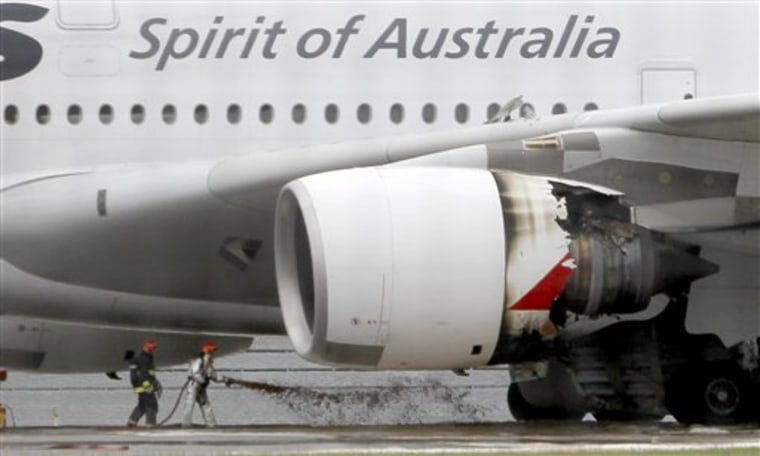Rolls-Royce Group said Friday that the failure of a Qantas A380 engine last week was specific to just one series of engines and confined to one component of the turbine engine that started an oil fire.
"First ... the issue is specific to the Trent 900," Rolls-Royce said in a statement. "Second, the failure was confined to a specific component in the turbine area of the engine. This caused an oil fire, which led to the release of the intermediate pressure turbine disc."
Leaks or oil stains have been discovered on six of the total of twenty A380s operated by Qantas, Lufthansa and Singapore Airlines that use the Trent 900 engines. Qantas and Singapore Airlines have grounded nine of the world's largest airliner between them while Germany's Lufthansa has already replaced an engine on one of its A380s.
The London-based aerospace, power systems and defense company, which is separate from the car manufacturer, said it was working with customers to fix the problems. It declined to give details on how long with would take to resolve the issues.
Rolls-Royce said the hit to its bottomline from the Qantas incident and its fallout will be partly mitigated by the company's other operations.
Shares in the company rose after the update — a signal that investors are happy to see a definitive statement after days of silence from the world's second-biggest engine maker behind General Electric and one of the last global industrial manufacturing companies in Britain.
Earlier mishaps
Engines on the A380 malfunctioned four times before one of them disintegrated during a flight from Singapore to Sydney last week, and aviation experts said that the earlier mishaps may hold clues to design or construction flaws.
Four problems dating to 2008 led to two warnings for airlines to check parts of the Rolls-Royce Trent 900, a technologically advanced model used by 20 Airbus A380s around the world.
Three of the four previous problems centered on the turbines or oil system.
The number of problems identified in the Trent 900 is not unusual for a jet engine, and analysts, pilots and former safety investigators caution that there is no obvious link between the earlier mishaps and last week's failure.
But the experts also say they suspect there may be critical problems that weren't detected before the engine went into use. Several experts pointed to the tubes that pump oil around the spinning turbines of the house-sized engine as a possible culprit.
Joerg Handwerg, a spokesman for the pilots' union for German airline Lufthansa, said that minor problems are routine for any jet engine, but it is possible that the issues are an indication that regulators did not adequately check the engine before approving it for commercial use.
"When you see we have a problem with not just one of these engines but several then it points towards that we have a problem in the certification process," Handwerg said.
Barr said the Trent 900 is "out there right at the edge of the envelope" of new engines that are lighter, more energy efficient, less polluting and less noisy.
"The engine has been out there for a few years, they've got some miles on it, and now they're finding things they didn't foresee," he said.
